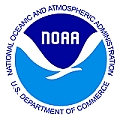Glossary:National Water Level Observation Network
From Indian River Lagoon Project
National Water Level Observation Network (NWLON)
The network of tide and water level stations operated by the National Ocean Service along the marine and Great Lakes coasts and islands of the United States. The NWLON is composed of the primary and secondary control tide stations of the National Ocean Service. Distributed along the coasts of the United States, this Network provides the basic tidal datums for coastal and marine boundaries and for chart datum of the United States. Tide observations at a secondary control tide station or tertiary tide station are reduced to equivalent l9-year tidal datums through the comparison of simultaneous observations with a primary control tide station. In addition to hydrography and nautical charting, and to coastal and marine boundaries, the Network is used for coastal processes and tectonic studies, tsunami and storm surge warnings, and climate monitoring. The National Water Level Observation Network also includes stations operated throughout the Great Lakes Basin. The primary network is composed of 54 sites with 139 seasonal gauge sites selectively operated 4 months annually for the maintenance of IGLD. The network supports regulation, navigation and charting, river and harbor improvement, power generation, various scientific activities, and the adjustment for vertical movement of the Earth's crust in the Great Lakes Basin.
Word Class: noun
Example: The National Water Level Observation Network (NWLON) is a permanent observing system that includes 210 continuously operating water level stations.

